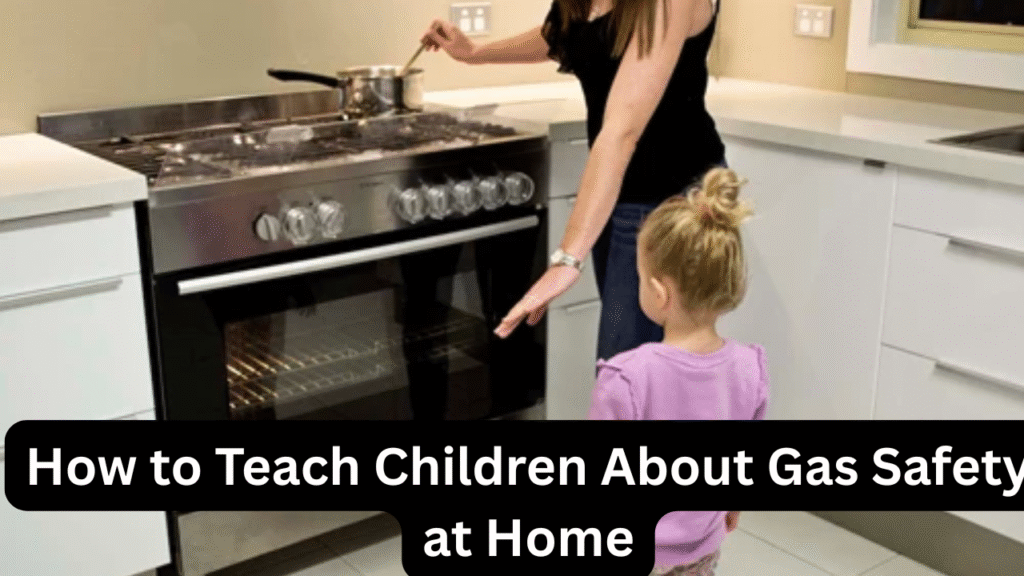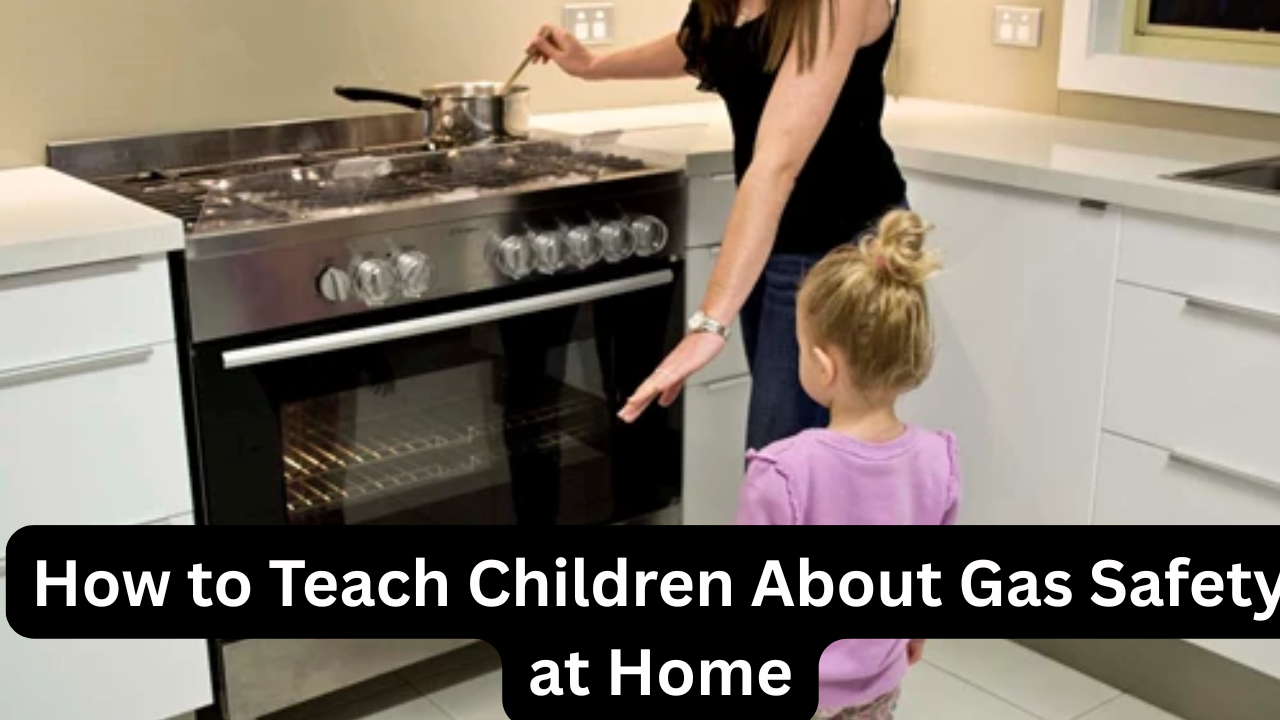
Gas is an essential energy source for heating, cooking, and hot water, but it can be dangerous if not handled properly. Children are naturally curious, which means they need clear, age-appropriate guidance on gas safety. Teaching them early builds lifelong habits, reduces risks, and ensures that the whole family can respond appropriately in an emergency
Why Teaching Kids About Gas Safety Matters
- Early Awareness Prevents Accidents – Children who understand the dangers are less likely to play near gas appliances.
- Faster Emergency Response – Kids who know what to do can alert adults quickly and help evacuate safely.
- Building Lifelong Habits – Gas safety learned young often becomes second nature.
Age-Appropriate Gas Safety Education
| Age Group | Teaching Focus | Example Activities |
|---|---|---|
| 4–6 years | Basic awareness of danger, stay away from stoves/heaters | Storybooks, cartoons about safety characters |
| 7–10 years | Recognizing gas smell, how to alert an adult | Smell identification games with safe scents |
| 11–14 years | Basic shut-off knowledge, CO detector awareness | Practice finding the shut-off valve with supervision |
| 15+ years | Detailed emergency procedures, helping younger siblings in a crisis | Role-play emergency scenarios, checking detectors |
Key Lessons to Teach Children
- Never Play Near Gas Appliances
Keep distance from stoves, heaters, and gas fireplaces. - Recognize the Smell of Gas
Explain that natural gas is odorless, but companies add a smell like rotten eggs for detection. - Know What to Do in an Emergency
- Tell an adult immediately.
- Do not switch lights or appliances on/off.
- Leave the house if told to evacuate.
- Understand the Role of Detectors
Show them where CO and gas leak detectors are and explain their alarms. - No DIY Repairs
Teach them never to touch valves, pipes, or connections.
Using Practical Methods
- Role-Playing Scenarios – Practice what to do if they smell gas.
- Safety Quizzes – Fun way to reinforce lessons.
- Visual Demonstrations – Show safe distances from appliances using tape on the floor.
- Storytelling – Use short, child-friendly stories about gas safety heroes.
Everyday Safety Rules for Kids
| Rule | Why It’s Important |
|---|---|
| Stay 3 feet away from stoves/heaters | Prevents burns and accidental gas knob turning |
| No matches or lighters | Eliminates risk of starting a fire |
| Tell an adult if something smells odd | Early detection of leaks can prevent danger |
| Don’t block appliance vents | Keeps air flowing and prevents CO buildup |
| Respect “No Touch” signs on appliances | Reinforces boundaries for safety |
Making Safety Fun
Children learn best when lessons are interactive. Parents can:
- Create safety charts with stickers for good habits.
- Use apps or online games focused on home safety.
- Involve them in detector testing (pressing the test button together).
Reinforcing Lessons Regularly
Gas safety should not be a one-time conversation.
- Monthly Reminders – Repeat key rules.
- Annual Drills – Practice evacuation and emergency steps.
- Seasonal Checks – Before winter heating starts, review rules again.
Common Mistakes Parents Make
- Assuming Kids Will “Just Know” – Children need explicit instruction.
- Making Safety Scary – Use calm, clear explanations to avoid fear.
- Not Leading by Example – Kids copy adult behavior, so practice safe habits yourself.
Overview Table
| Step | What to Teach | How to Teach It |
|---|---|---|
| Awareness | Gas is useful but can be dangerous | Stories, videos |
| Hazard Recognition | Smell of gas, blocked vents | Scent samples, demonstrations |
| Emergency Response | Tell an adult, leave the area | Role-playing drills |
| Detector Use | Purpose of CO and gas leak alarms | Show alarms and test them together |
| No-Touch Policy | Valves, knobs, and pipes are off-limits | Signs, visual boundaries |
| Continuous Learning | Review rules regularly | Monthly talks and annual safety drills |
Conclusion
Gas safety at home is a shared responsibility — and children are part of that safety team. By introducing clear, age-appropriate lessons, reinforcing them regularly, and making the learning process engaging, you help ensure that your kids know how to stay safe and respond in emergencies. A home where everyone understands gas safety is a home that’s better protected.
3 One-Line FAQs
Q1: At what age should I start teaching my child about gas safety?
A1: You can start as early as 4–6 years old with simple, age-appropriate concepts.
Q2: How do I teach kids about the smell of gas safely?
A2: Use safe scented examples and explain the “rotten egg” smell added to gas.
Q3: Should kids learn how to turn off the gas supply?
A3: Older children (around 11+) can learn with supervision, but never attempt it alone.

